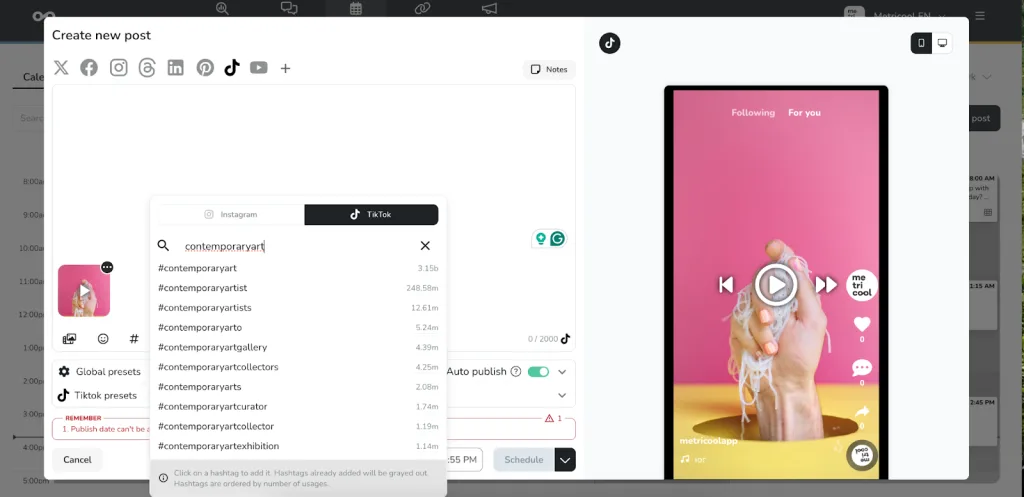Guide to Conducting a Competitor Analysis on TikTok
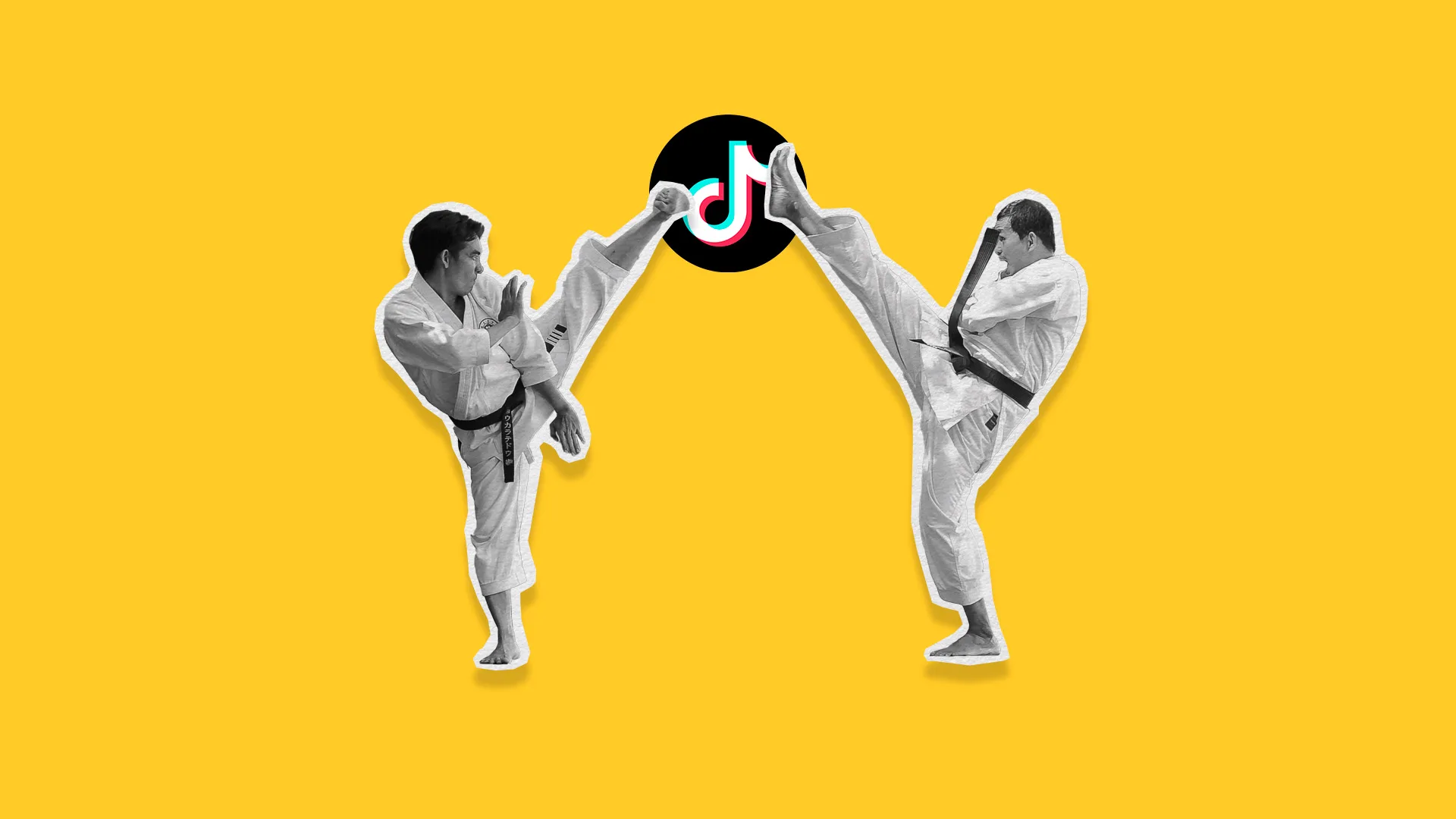
In marketing, competitor analyses are crucial for brands to benchmark their performance and discover their main industry competitors. Brands must detect their top competitors and understand their efforts to be competitive. From this understanding, brands can uncover successful strategies and content ideas to adapt to their product or service.
Especially with TikTok being a major search engine and information hub for users, investigating the top-ranking content and brands will help refine your strategy and boost profile visibility. Download the template for FREE
But, how do you conduct this analysis and gather data? This article will explain how to run a TikTok competitor analysis to stay competitive in your industry and develop a winning TikTok marketing strategy.
What is a TikTok Competitor Analysis?
The competitor analysis process includes monitoring the social media actions and strategies that help your competitors grow their accounts and promote their products or services. Conducting a competitor analysis is important for any social media channel, to understand who and what you’re competing against.
This analysis will reveal the strategies behind a brand’s social media marketing strategy, including keywords, hashtags, content topics, and formats. You can then compare your analytics against competitors to gain new content, strategy, and campaign ideas.
How to Do a Competitor Analysis on TikTok in 5 Steps
The competitor analysis process should include 5 key steps that will leave you with a comprehensive understanding of what your competitors are doing on TikTok, and how you can improve your own brand strategies and presence.
Identify main competitors
The first step is to explore the TikTok app to find your main competitors. How can you do this? I recommend using search terms, hashtags, and keywords related to your product, service, or industry. What accounts appear amongst the first search results?
As TikTok content also appears in Google search results, you can use related keywords and phrases to your product to see if the top search results coincide with TikTok results. Since TikTok is a creator-heavy platform, the top results in the app may not necessarily be your main “competitors”.
Compile a list of the main competitors in your niche. We recommend selecting 3-5 and then diving deeper into each one. Even if there are more competitors, you can grasp the content quality and topics working well for other brands in your niche.
Record competitor’s performance metrics
Next, you will go one by one, recording your competitor’s performance analytics. These metrics reveal how engaged the audience was and if the content resonated. What metrics should you keep track of?
- Number of followers
- Average views
- Average likes
- Comments
- Shares
- Highest viewed videos
- Engagement rate
- Reach
You can use TikTok’s native analytics to record this data. To calculate an account’s engagement rate, divide the total number of interactions (likes, comments, shares) by the total number of views.
We also recommend viewing your competitor’s account evolution. Look back at the brand’s TikTok presence and how they have grown in the last few months, over the year, and even from the start.
Analyze your competitor’s content strategy
Now that you have recorded basic metrics, it’s time to dive deeper into their content. This means viewing their videos to see what content formats, topics, and strategies they use. From this, you can comprehend a brand’s tone of voice and common messaging. Beyond the messaging, analyze what types of content they post. Are most of their videos meme-related? More product promotion-oriented content? Educational? Lifestyle? From this alone, you can grasp a brand’s image. Do they utilize influencer marketing in their strategy? Paid advertising? These elements are essential to understanding a brand’s overall content strategy.
Here you can detect the differences between your product and your competitors, which will help you stand out on the platform with your content.
Benchmark analysis
Since you already know your competitor’s performance metrics, it’s time to analyze your brand’s TikTok performance. You have two options: use TikTok’s native analytics or a third-party tool, like Metricool. Once again, analyze the same performance metrics to compare against your competitors. Based on these differences, you can see how you can position your brand in a way that’s different from anyone else.
If you don’t have one already, we recommend switching to a TikTok Business account for extensive analytics, marketing tools, and ad campaign possibilities. Inside your TikTok profile, you can click “More data” on your videos to view a complete video analysis. This includes watch time, retention rate, viewer demographics, and engagement.
Metricool also provides in-depth TikTok analytics for your profile growth and individual content. Inside Metricool’s Analytics tab, you can access analytics for each connected social media channel. This tool is completely free and compatible with over 9 social media channels.
For TikTok, view your overall account growth, follower demographics, overall post-performance, impression sources, average video views, and a list of top-performing content.
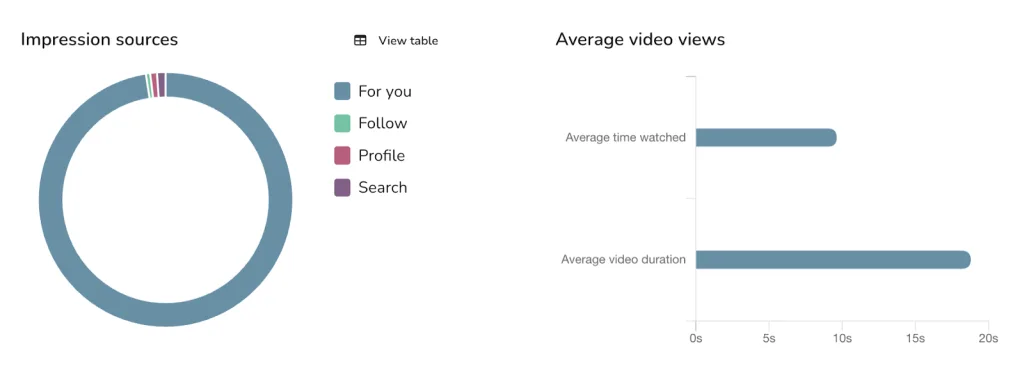
The list of top-performing posts provides metric breakdowns for each content piece. This includes views, likes, comments, shares, reach, video duration, and engagement.
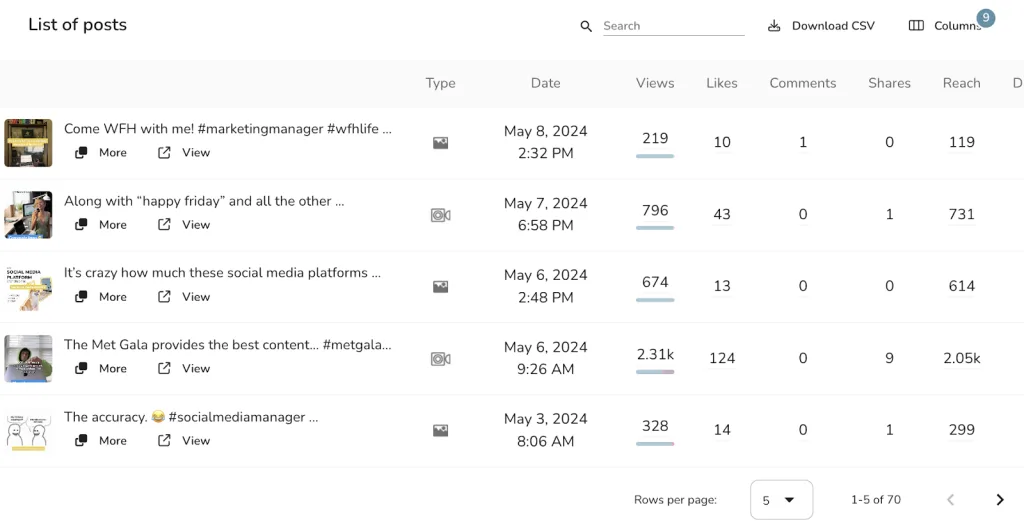
Beyond analytics and reporting, you can schedule and auto-publish content, view and reply to comments and DMs, create link-in-bio pages, and view TikTok ads metrics. The best part is not only can you do this for just TikTok, but all major social media platforms.
Detect trends and opportunities
Lastly, the information and data you have collected are all for detecting new opportunities and trends. Capitalizing on these opportunities will help your brand stand out on TikTok. It’s important to note that this process doesn’t mean directly copying another brand’s content.
This is why conducting a competitor analysis is so important, to unlock new opportunities and unique strategies for your brand. Each brand has its tone of voice, and we encourage this to shine through. If you’re looking for more metrics to get inspired and understand how this platform is working in 2024, here are 50 more statistics:
Social Media Competitor Analysis Template
As you record data and keep track of your industry competitors, utilize this free social media competitor analysis template, which you can use for any social media channel. Rather than creating a completely new document, this pre-formatted template will speed up your analysis and get you creating quality content, sooner.
You can download the template for free, copy it, and paste it to adapt to your brand.
TikTok Account Management with Metricool
Centralize your TikTok management with Metricool. Instead of jumping between multiple platforms to post content, view analytics, reply to messages, run ads, create link-in-bio pages… you can do all of this in one place. You can also view your best time to post on TikTok, based on when your followers are more active, allowing you to reach more people at the right time.
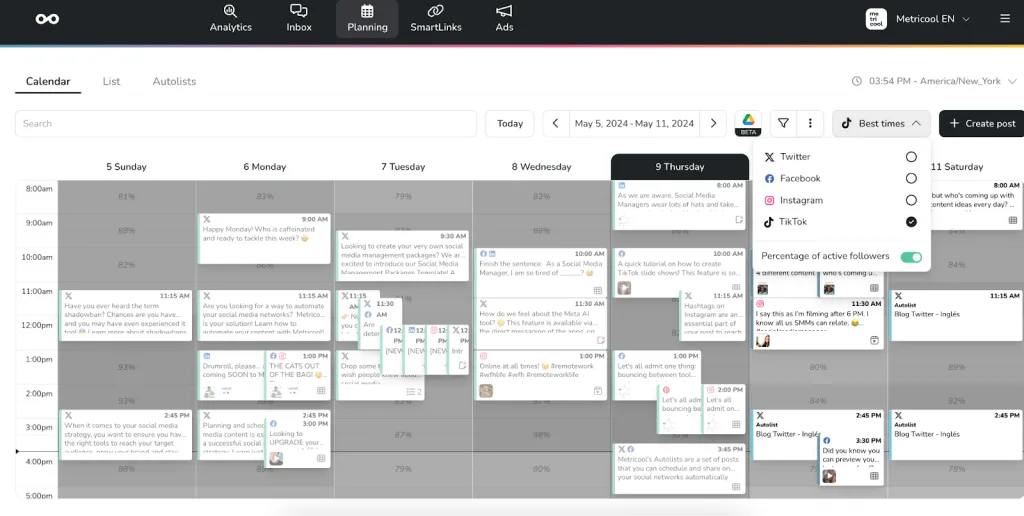
When scheduling content, you can also use Metricool’s hashtag generator to search for top hashtags related to your content. Simply find the # button inside Metricool’s planner and search for hashtags to see the total usage for each hashtag.
Metricool is free and allows you to schedule up to 50 monthly posts for all major social media channels. Your free account includes a connection of 1 account per social media network. So, you can manage your Instagram, Facebook, Pinterest, YouTube, X (Twitter), Google Business Profile, and Twitch alongside your TikTok management.
